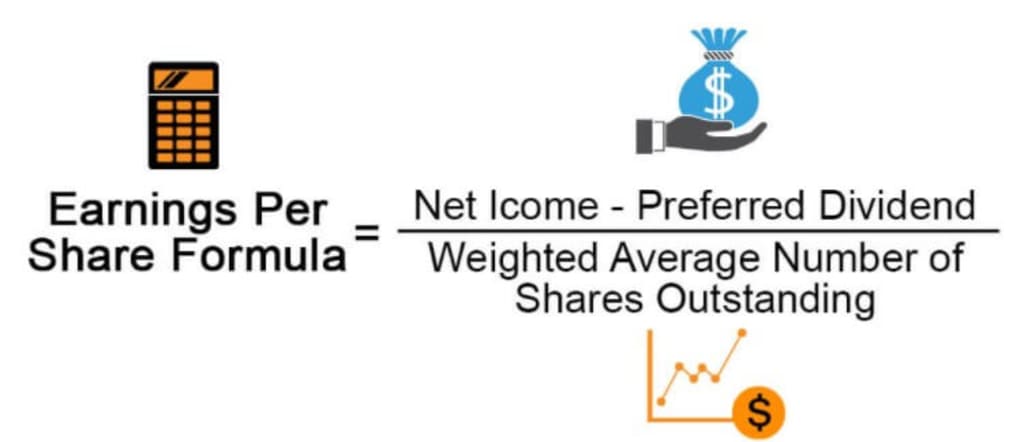Understanding EPS: A Key Metric for Investors to Evaluate a Company's Profitability and Potential for Growth
Understanding Earnings Per Share (EPS) for Investment Analysis: Calculating, Interpreting, and Limitations.

Introduction:
When it comes to investing in the stock market, it's important to have a solid understanding of a company's financial performance. One metric that is commonly used for this purpose is the earnings per share, or EPS. In this article, we will explore what the EPS is, how to calculate it, and how it can be used as a tool for investment analysis.
What is EPS?
The EPS is a financial ratio that represents the portion of a company's profit that is allocated to each outstanding share of common stock. In other words, it shows how much a company earns per share of stock. EPS is an important metric for investors because it helps them understand a company's profitability and its potential for growth.
How to Calculate EPS?
The formula for calculating EPS is straightforward. It is calculated by dividing a company's net income by the number of outstanding shares.
EPS = Net Income / Number of Outstanding Shares
For example, if a company has a net income of $1 million and 1 million outstanding shares, then its EPS would be $1 ($1 million/1 million shares).
Interpreting EPS:
EPS is a key metric for investors because it can be used to compare the earnings of different companies. A higher EPS means that a company is earning more per share of stock, which can indicate that it is more profitable.
It's important to note that EPS can be influenced by a number of factors, including a company's revenue, expenses, taxes, and outstanding shares. A company can increase its EPS by increasing its revenue or reducing its expenses, or by reducing the number of outstanding shares.
Limitations of EPS:
While EPS can be a useful tool for investment analysis, it does have its limitations. One limitation is that it does not take into account a company's debt or other financial obligations. Additionally, EPS does not reflect a company's potential for future growth, which can be an important consideration for investors.
Summarise
EPS stands for Earnings Per Share. It's a financial term that is used to describe how much profit a company has made per share of its stock. Companies make money by selling products or services, and when they earn a profit, they can distribute that profit to their shareholders in the form of dividends or reinvest it back into the company.
EPS is calculated by dividing a company's earnings by the number of outstanding shares of stock. So, if a company earned $100,000 and has 50,000 shares of stock outstanding, its EPS would be $2. This means that for every share of stock, the company earned $2 in profit.
EPS can be an important metric for investors because it helps them understand how profitable a company is on a per-share basis. Investors can use EPS to compare different companies and make informed investment decisions.
It's important to keep in mind that EPS is just one financial metric, and investors should also consider other factors when making investment decisions. Additionally, EPS can fluctuate over time as a company's profits and number of outstanding shares change.
Conclusion:
EPS is a tool used to understand how much money a company is earning per share of stock. It's important for investors because it helps them understand how profitable a company is. To calculate EPS, you divide a company's net income by the number of outstanding shares. However, EPS doesn't consider a company's debt or potential for growth. So, it's important to use EPS with other tools to make good investment decisions.
About the Creator
Tag Business
I Will Providing Various Company Information
Enjoyed the story? Support the Creator.
Subscribe for free to receive all their stories in your feed. You could also pledge your support or give them a one-off tip, letting them know you appreciate their work.






Comments
There are no comments for this story
Be the first to respond and start the conversation.